According to the National Statistics Committee, out of a total of 412,000 households in the capital, 200,000, or 48.6%, reside in the Ger district. Heating is an urgent problem for people living in the Ger district. In Mongolia, many projects against air pollution are being implemented, one of which is the “SOAP II” project, which creates energy-efficient solutions and integrate them into citizens' daily lives for practical use. This project is being implemented with the funding of the SWITCH-Asia program of the European Union. At the first stage of the project, energy-efficient insulation technologies were developed to reduce heat loss in houses.
Approximately 160 micro, small, and medium businesses received training to reduce heat loss as part of the project. Therefore, "insulation advisor" are now able to use their knowledge and earn additional income, and households have a quality insulation system for their houses with the right technology.

The SOAP II project aims to provide renewable energy alternatives for individuals who are constructing a new house and trying to determine which energy source to use. Nearly zero-Energy building (Nzeb) was built and placed beside the 1st khoroo of Bayanzurkh district, Ulaanbaatar city, and the 5th building of the University of Science and Technology. On April 30, 2024, the opening ceremony of this demo house.
During the opening ceremony, Adrien Mourgues, Head of Cooperation Team, Delegation of the European Union to Mongolia, said:

-The European Union supports sustainable consumption and production practices worldwide. For example, it operates in Asia through the SWITCH-Asia program. Within this program, the first phase of the "SOAP" project was successfully completed.
The first phase of the SOAP II project was a resounding success, marked by the establishment delivery model for insulating houses, providing top-notch services using quality insulation materials, and strengthening our stakeholder network. During the project's second phase, a demo house (nearly-zero-energy building) was built. This demo house is equipped with various energy-saving technologies that were being tested on a trial basis. The purpose of building this model home was to demonstrate the benefits of new solutions and raise awareness of opportunities for energy conservation. And the house is always open to the public.
Eliane Jarry, Country of GERES INGO / Switch-Off Air in Mongolion Cities Project Manager, said:

-This is an energy efficient house. This house utilized technology that reduces electricity consumption and provides independent heating.
To build the house, the project team sought the opinions of the residents of the Ger district and designed it according to their needs. Two years of the project were spent on the demo house. We developed three types of blueprints for energy-efficient buildings. We provide these blueprints to citizens for free. If citizens are interested in information on how to build an energy-efficient house, they are welcome to come here.
In the framework of the “SOAP II” project, we developed insulation solutions and trained teams to be capable of providing insulation services, established connections with material suppliers and collaborated with banks and non-banking financial institutions (NBFI), and created a delivery model.
Currently, we are introducing energy efficient solutions for people who are planning to build a new house. The project will continue for two years. In this context, we also extented the project in Darkhan-Uul province. We are working with organizations looking for opportunities to continue existing activities even after the end of the project.
In the School Civil Engineering and Architecture of the University of Science and Technology, many projects and researches are carried out with a purpose of creating energy efficiency in apartments. In particular, this demo house was developed by Building Energy Efficiency Center of MUST
In this regard, B.Munkhbayar, director of the Building Energy Saving of MUS, said:
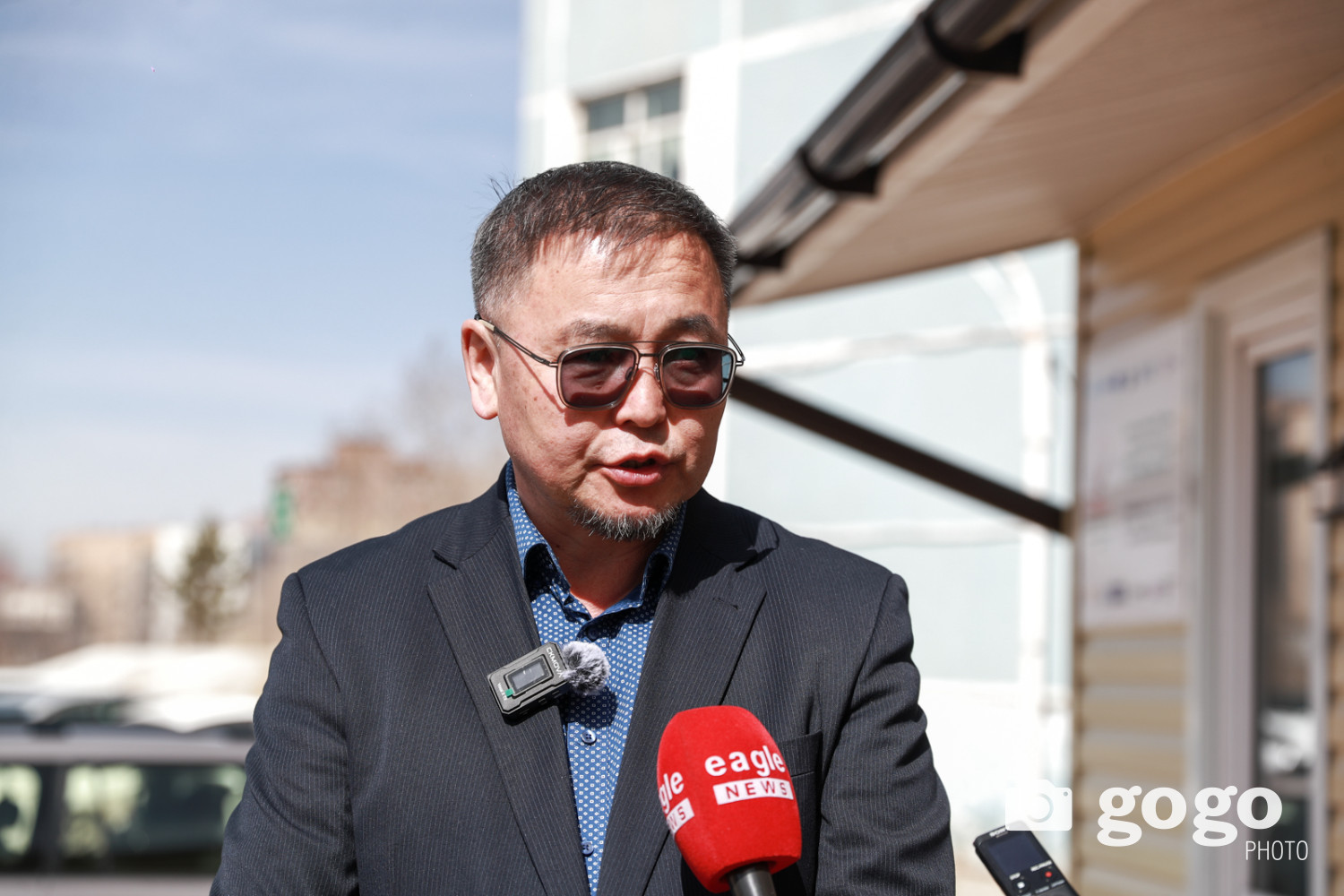 "This building that we are presenting today is Nearly zero energy building. In other words, 60% less energy than normal house will be used to heat this demo house.
"This building that we are presenting today is Nearly zero energy building. In other words, 60% less energy than normal house will be used to heat this demo house.
It is possible to reduce the energy consumption of any building, not just this building. There is no special technology, only very good insulation is required. The information of insulation can be received from the www.dulaalga.mn website and the "Dulaan Shiidel project" Facebook page.
There are two different systems used to reduce consumption. One is an air and water heat pump. During the heating season or throughout the year, this heat pump will consume approximately 2.5 times less electricity than a electric heater. The remaining low consumption is solved by solar panels. It is an independent energy source. It produces 11400kWh of energy annually, which meets the building's annual heating demand in balance. That's why it's called a zero-energy house, and that's the purpose of the house.

The apartment is 6x6 ratio and is very well insulated. The building's energy class A, or high efficiency, heating system has a 5-15 kW air-water heat pump and a 5.6 kW solar generator. There are 3 types of storage systems which are battery storage, water storage, and electric heater.
About the storage systems, E.Battur, director of “Warmmax” LLC:
-We developed a study on whether it is possible to solve heat without burning a fire and without a chimney, and we officially implemented it in this house. We have a conclusion that it is possible to heat the house with the solar system at -40 degrees.
In other words, the heat storage heater placed in this apartment consumes electricity at 8 hours of 24 hours and rests at other times. Thus, during the 8-hour working period, it accumulates up to 700 degrees of heat and stores it for the rest of the time to keep the house warm.
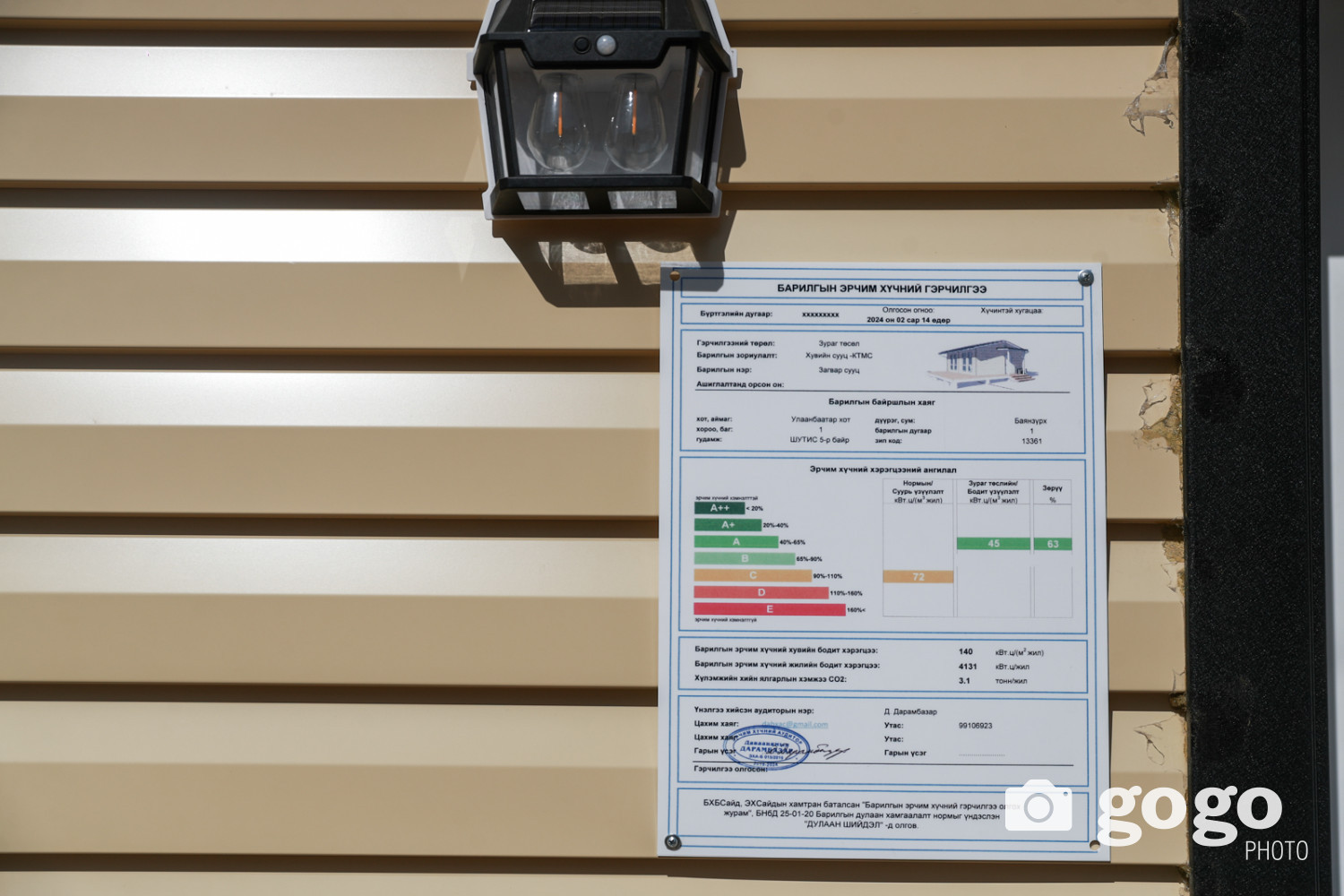
This demo house is open for people to experience energy-efficient homes firsthand. The model house is located in the front of the University of Science and Technology building 5, 1st khoroo, Bayanzurkh district, Ulaanbaatar city, and will be open every Wednesday from 14:00 to 17:00 until June 15, 2024.
As a visitor, you have the opportunity to receive free blueprints of the building, a valuable resource for making your own house energy efficient. Additionally, you can seek expert advice on key considerations when building an energy-efficient house.
“SOAP II” project will continue until 2026. During this period, project will focuses on reducing the energy consumption of detached houses, making them less reliant on centralized systems reducing the energy consumption of detached houses, making them less reliant on centralized systems in accordance with the European Union guidelines for zero-energy houses.
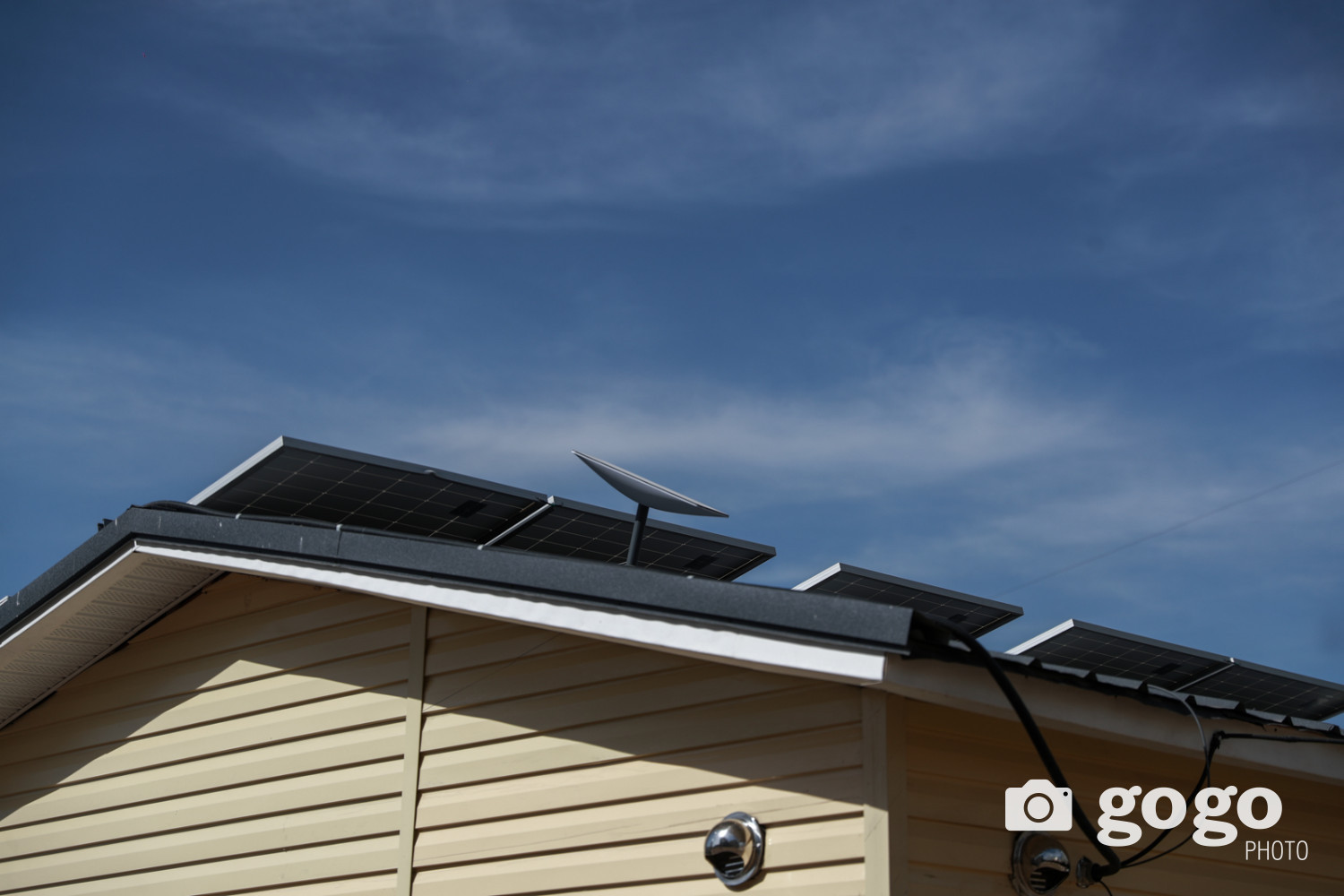

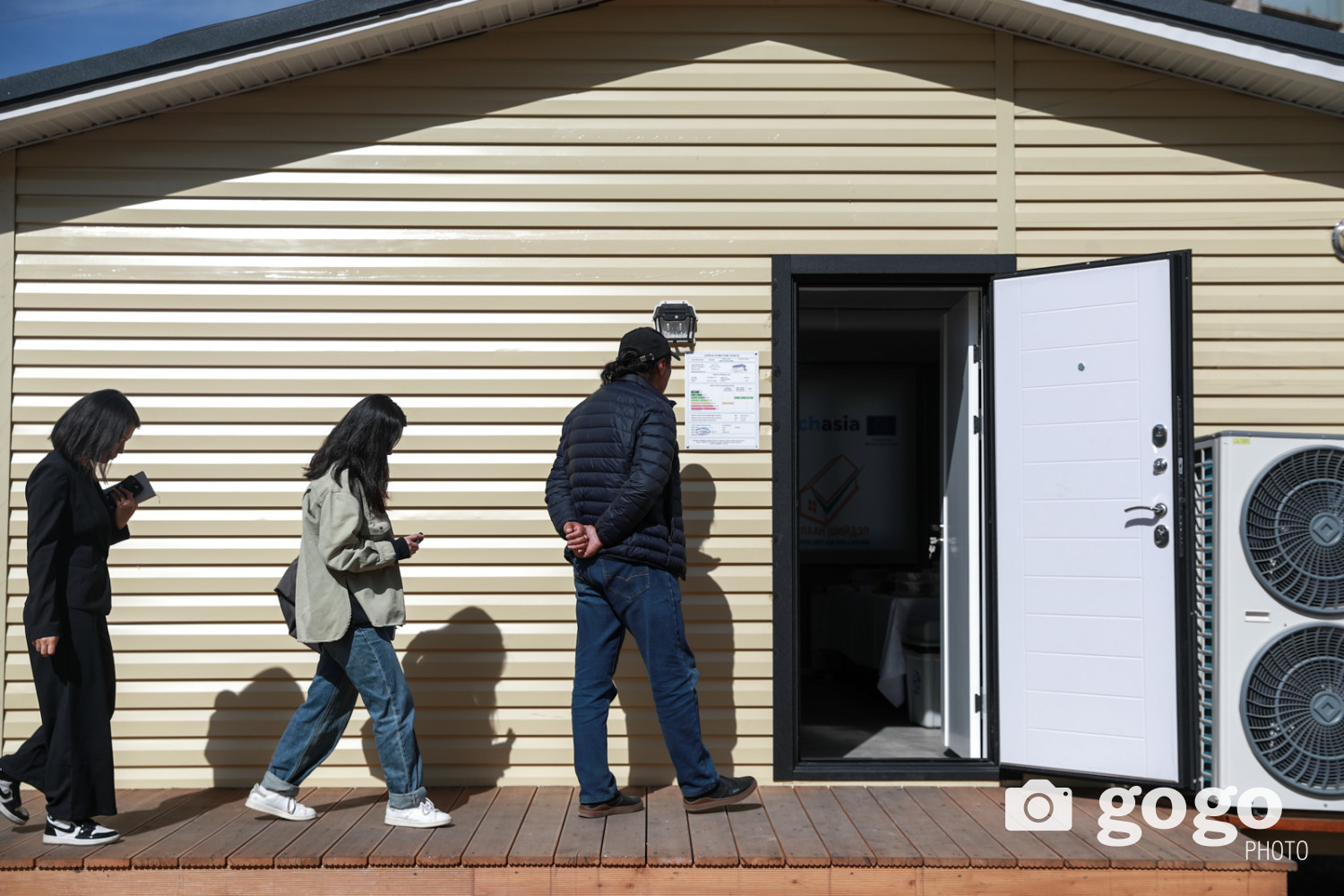

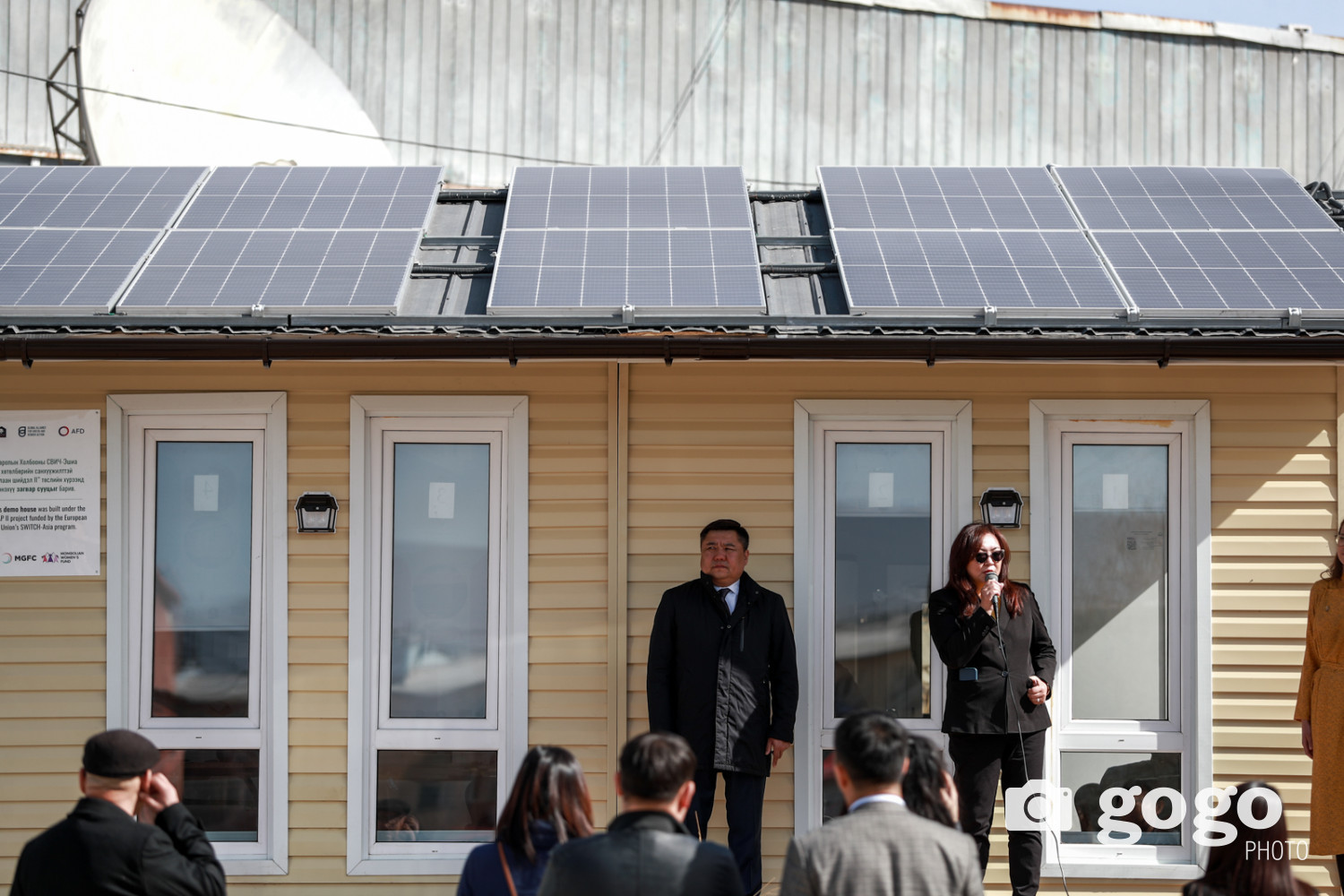
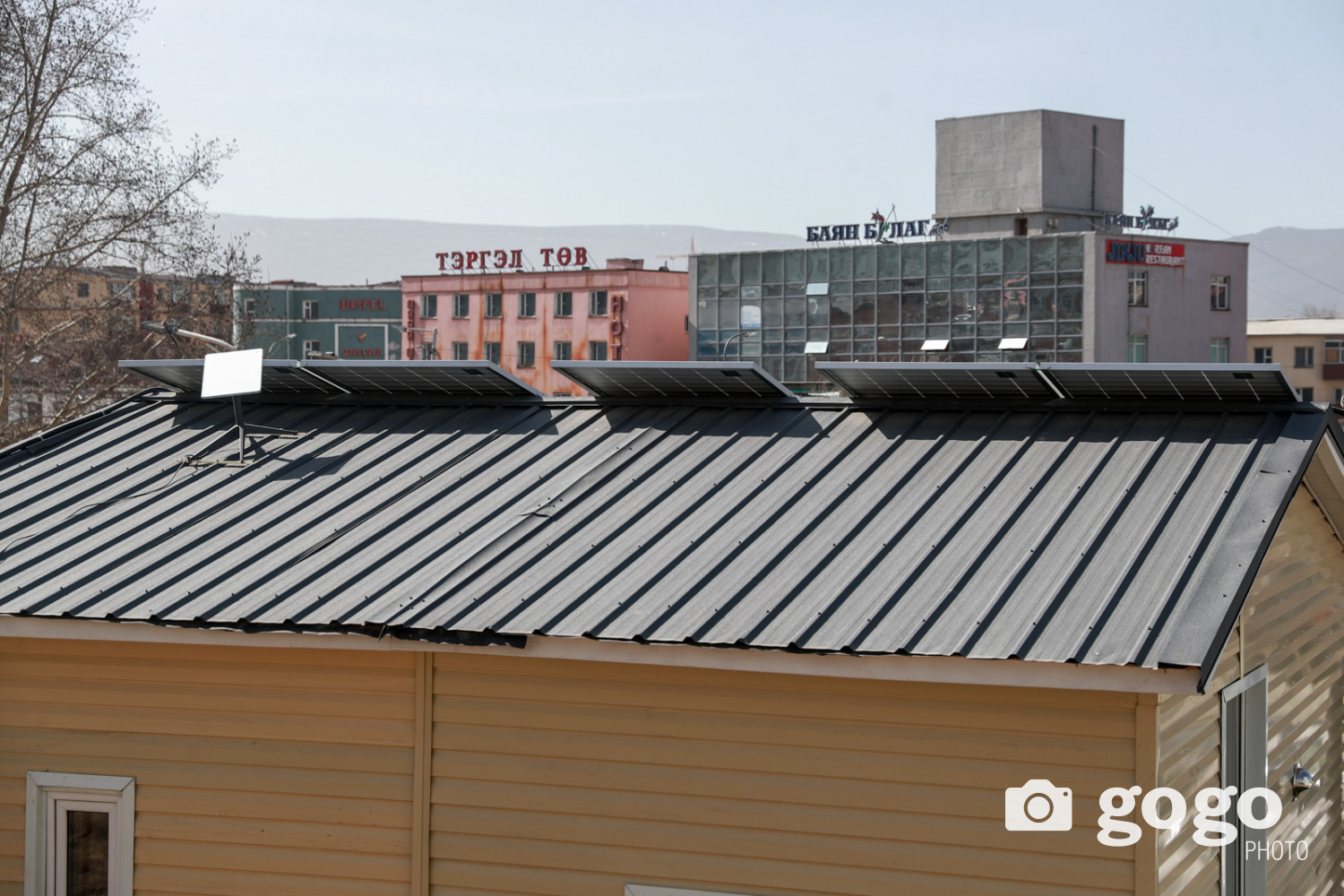
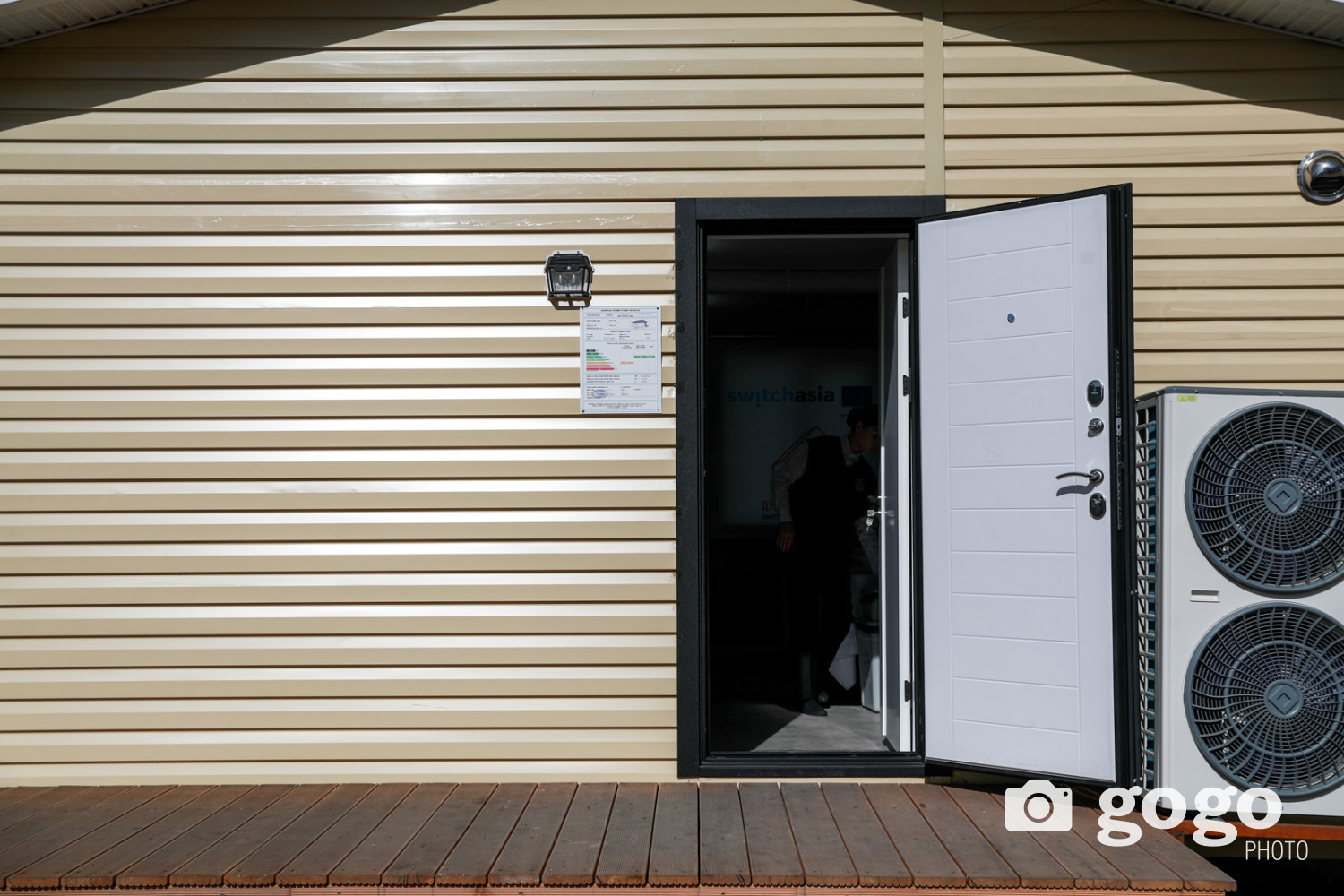

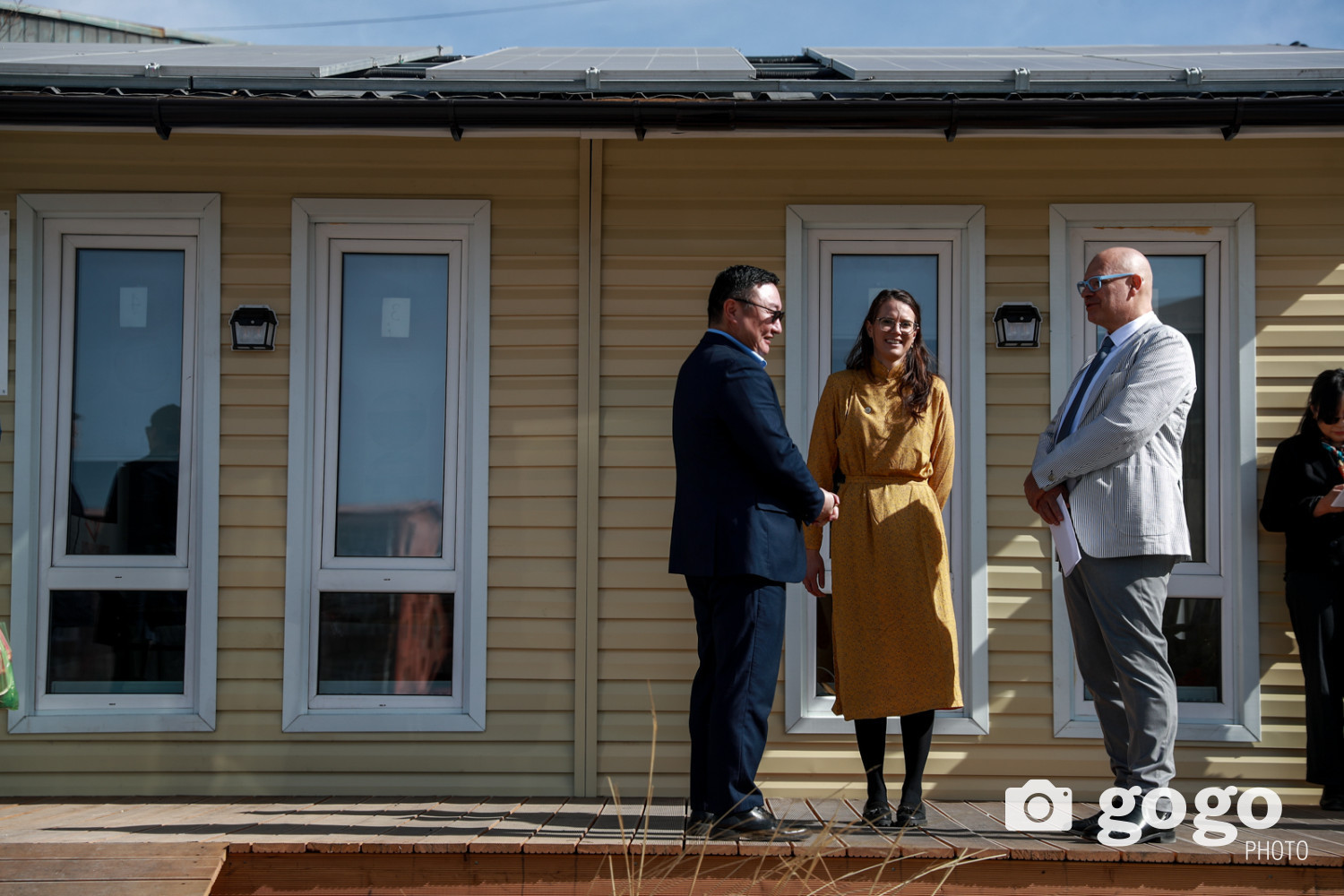
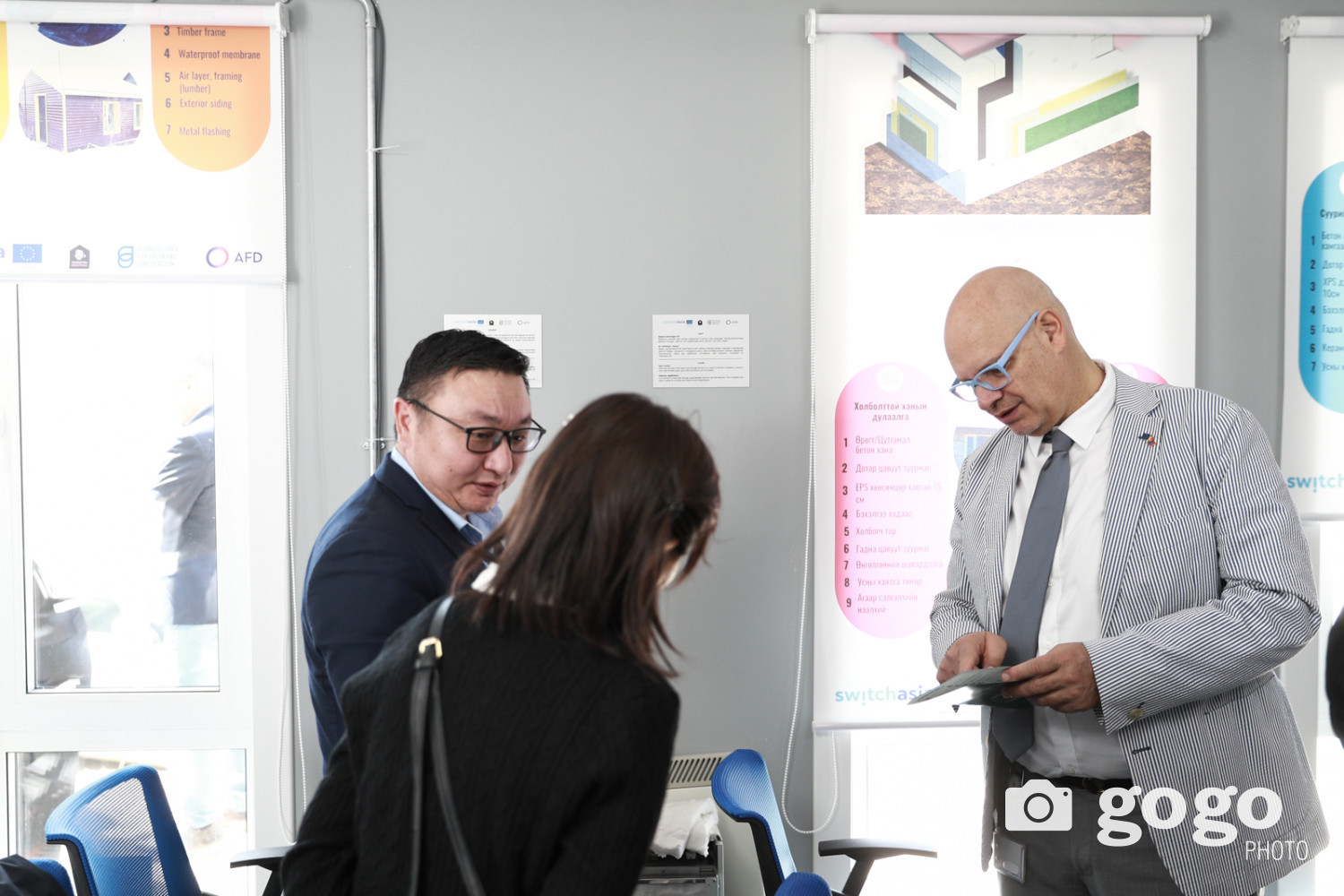
According to the National Statistics Committee, out of a total of 412,000 households in the capital, 200,000, or 48.6%, reside in the Ger district. Heating is an urgent problem for people living in the Ger district. In Mongolia, many projects against air pollution are being implemented, one of which is the “SOAP II” project, which creates energy-efficient solutions and integrate them into citizens' daily lives for practical use. This project is being implemented with the funding of the SWITCH-Asia program of the European Union. At the first stage of the project, energy-efficient insulation technologies were developed to reduce heat loss in houses.
Approximately 160 micro, small, and medium businesses received training to reduce heat loss as part of the project. Therefore, "insulation advisor" are now able to use their knowledge and earn additional income, and households have a quality insulation system for their houses with the right technology.

The SOAP II project aims to provide renewable energy alternatives for individuals who are constructing a new house and trying to determine which energy source to use. Nearly zero-Energy building (Nzeb) was built and placed beside the 1st khoroo of Bayanzurkh district, Ulaanbaatar city, and the 5th building of the University of Science and Technology. On April 30, 2024, the opening ceremony of this demo house.
During the opening ceremony, Adrien Mourgues, Head of Cooperation Team, Delegation of the European Union to Mongolia, said:

-The European Union supports sustainable consumption and production practices worldwide. For example, it operates in Asia through the SWITCH-Asia program. Within this program, the first phase of the "SOAP" project was successfully completed.
The first phase of the SOAP II project was a resounding success, marked by the establishment delivery model for insulating houses, providing top-notch services using quality insulation materials, and strengthening our stakeholder network. During the project's second phase, a demo house (nearly-zero-energy building) was built. This demo house is equipped with various energy-saving technologies that were being tested on a trial basis. The purpose of building this model home was to demonstrate the benefits of new solutions and raise awareness of opportunities for energy conservation. And the house is always open to the public.
Eliane Jarry, Country of GERES INGO / Switch-Off Air in Mongolion Cities Project Manager, said:

-This is an energy efficient house. This house utilized technology that reduces electricity consumption and provides independent heating.
To build the house, the project team sought the opinions of the residents of the Ger district and designed it according to their needs. Two years of the project were spent on the demo house. We developed three types of blueprints for energy-efficient buildings. We provide these blueprints to citizens for free. If citizens are interested in information on how to build an energy-efficient house, they are welcome to come here.
In the framework of the “SOAP II” project, we developed insulation solutions and trained teams to be capable of providing insulation services, established connections with material suppliers and collaborated with banks and non-banking financial institutions (NBFI), and created a delivery model.
Currently, we are introducing energy efficient solutions for people who are planning to build a new house. The project will continue for two years. In this context, we also extented the project in Darkhan-Uul province. We are working with organizations looking for opportunities to continue existing activities even after the end of the project.
In the School Civil Engineering and Architecture of the University of Science and Technology, many projects and researches are carried out with a purpose of creating energy efficiency in apartments. In particular, this demo house was developed by Building Energy Efficiency Center of MUST
In this regard, B.Munkhbayar, director of the Building Energy Saving of MUS, said:
 "This building that we are presenting today is Nearly zero energy building. In other words, 60% less energy than normal house will be used to heat this demo house.
"This building that we are presenting today is Nearly zero energy building. In other words, 60% less energy than normal house will be used to heat this demo house.
It is possible to reduce the energy consumption of any building, not just this building. There is no special technology, only very good insulation is required. The information of insulation can be received from the www.dulaalga.mn website and the "Dulaan Shiidel project" Facebook page.
There are two different systems used to reduce consumption. One is an air and water heat pump. During the heating season or throughout the year, this heat pump will consume approximately 2.5 times less electricity than a electric heater. The remaining low consumption is solved by solar panels. It is an independent energy source. It produces 11400kWh of energy annually, which meets the building's annual heating demand in balance. That's why it's called a zero-energy house, and that's the purpose of the house.

The apartment is 6x6 ratio and is very well insulated. The building's energy class A, or high efficiency, heating system has a 5-15 kW air-water heat pump and a 5.6 kW solar generator. There are 3 types of storage systems which are battery storage, water storage, and electric heater.
About the storage systems, E.Battur, director of “Warmmax” LLC:
-We developed a study on whether it is possible to solve heat without burning a fire and without a chimney, and we officially implemented it in this house. We have a conclusion that it is possible to heat the house with the solar system at -40 degrees.
In other words, the heat storage heater placed in this apartment consumes electricity at 8 hours of 24 hours and rests at other times. Thus, during the 8-hour working period, it accumulates up to 700 degrees of heat and stores it for the rest of the time to keep the house warm.

This demo house is open for people to experience energy-efficient homes firsthand. The model house is located in the front of the University of Science and Technology building 5, 1st khoroo, Bayanzurkh district, Ulaanbaatar city, and will be open every Wednesday from 14:00 to 17:00 until June 15, 2024.
As a visitor, you have the opportunity to receive free blueprints of the building, a valuable resource for making your own house energy efficient. Additionally, you can seek expert advice on key considerations when building an energy-efficient house.
“SOAP II” project will continue until 2026. During this period, project will focuses on reducing the energy consumption of detached houses, making them less reliant on centralized systems reducing the energy consumption of detached houses, making them less reliant on centralized systems in accordance with the European Union guidelines for zero-energy houses.











